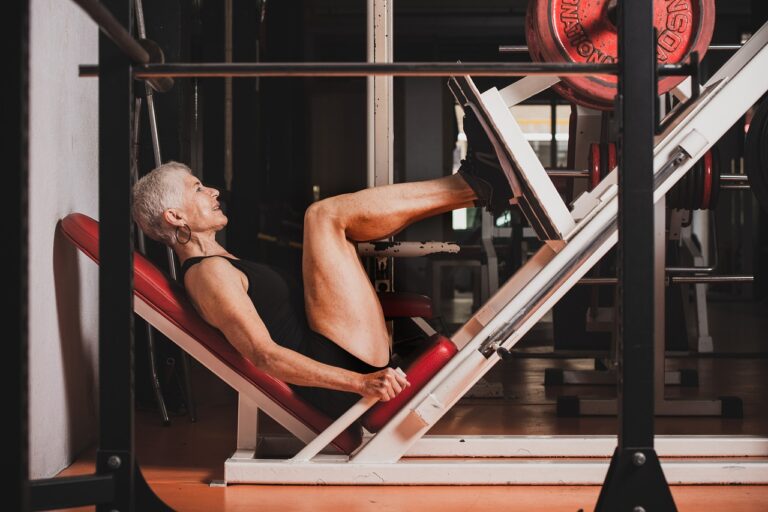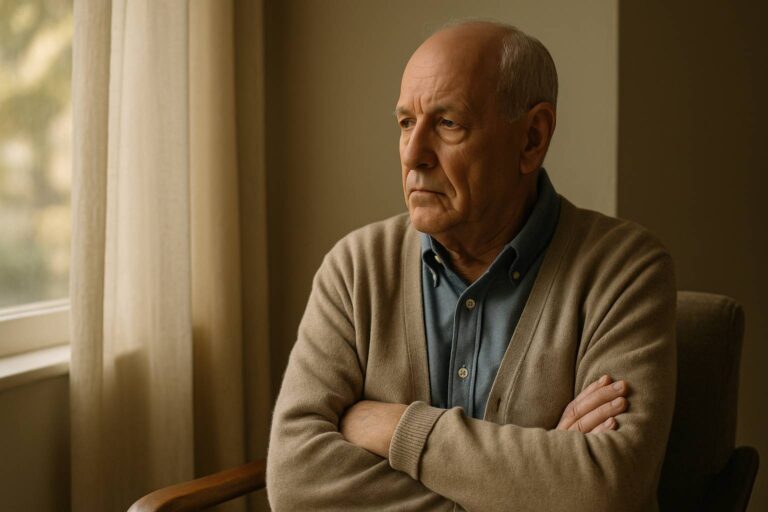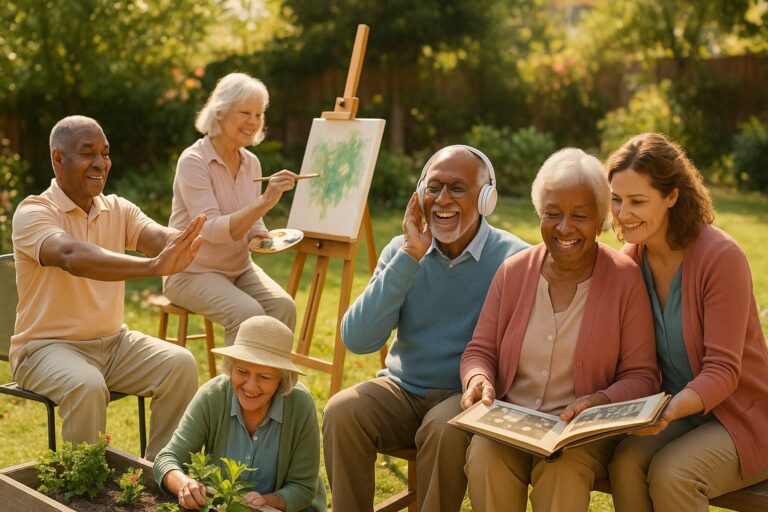Intramedullary Rodding: For Seniors and Youngsters
When you hear the words “intramedullary rodding,” your first thought probably isn’t about your aging parent or grandparent. But in truth, this little-known medical procedure has quietly become a lifesaver for thousands of older adults who’ve suffered sudden, devastating fractures—especially to the thighbone (femur) or upper arm (humerus).
And here’s the thing most families don’t know: for seniors, it often takes just one fall. One slip on the bathroom floor. One unexpected stumble at the grocery store. One quiet moment that turns into a long and difficult road back to mobility—unless the right support and treatment are in place.
Intramedullary rodding, also known as intramedullary nailing or IM rodding, is a specialized orthopedic surgery designed to stabilize broken long bones by placing a metal rod inside the bone’s natural canal. It’s commonly used to repair serious fractures—and while it’s often associated with younger trauma victims (like car crash survivors or athletes), it’s actually become more common than ever among seniors, especially those living with osteoporosis or frailty.
In this guide, I’ll walk you through everything you and your family need to know:
- What intramedullary rodding actually is—without the medical jargon
- Why it’s often the best choice for seniors with bone fractures
- What surgery and recovery look like, especially in a retirement or assisted living setting
- And how you can play a vital role in helping your loved one get back on their feet—both literally and emotionally
This isn’t just about a procedure. It’s about hope, healing, and giving our elders the best possible chance to stay mobile, independent, and well.
What Is Intramedullary Rodding? (Plain-English Explanation)
Let’s break it down simply—intramedullary rodding may sound like a mouthful, but it’s really just a fancy way of describing a very smart solution to a serious problem: a broken bone that needs strong, internal support to heal properly.
Here’s what the term means:
- “Intramedullary” means inside the bone’s marrow canal—that hollow space in the center of long bones like the thighbone (femur), shinbone (tibia), or upper arm (humerus).
- “Rodding” refers to the process of inserting a strong metal rod into that canal to hold the broken pieces of bone together, from the inside out.
In more practical terms? Imagine the bone is like a hollow straw that has snapped. What intramedullary rodding does is slide a straight, sturdy rod down the center of that straw, aligning the broken ends and keeping everything stable while the body heals. It’s like reinforcing a broken flagpole with a steel rod running down the middle.
The rod is held in place with locking screws—one or two at each end—so it doesn’t shift. Once it’s inserted, the bone can start healing properly, and in many cases, the person can begin moving around much sooner than they could with traditional casting or external braces.
Common bones treated with this method include:
- Femur (thighbone) – most common in seniors after a fall
- Tibia (shinbone) – often due to lower leg fractures
- Humerus (upper arm bone) – especially in older adults with fragile bones
This isn’t a one-size-fits-all surgery, but when it’s the right choice, it can dramatically reduce healing time, prevent complications, and get your loved one back on their feet more quickly and safely.
Who Needs Intramedullary Rodding? (Elderly vs. Younger Patients)
Intramedullary rodding isn’t just for one kind of patient—it’s used across all age groups. But the reasons why it’s used, and how people recover from it, can vary dramatically depending on a person’s age and overall health.
Let’s break it down.
Why Intramedullary Rodding Is Common in Seniors
For older adults, especially those over 70, bone fragility is a real and growing concern. Conditions like osteoporosis make bones thinner, weaker, and more likely to fracture from even minor trauma. Something as simple as:
- Slipping on a wet bathroom floor
- Losing balance while getting out of bed
- Tripping over a rug in the hallway
…can lead to serious fractures of the femur, tibia, or humerus—the long bones that are critical for walking or using the arms.
In these situations, intramedullary rodding often becomes the go-to option because it:
- Stabilizes the fracture quickly
- Allows the patient to bear weight sooner (which is vital to avoid complications like pneumonia or blood clots)
- Provides better outcomes in bones too fragile for traditional screws or plates
For elderly patients, the goal is not just to heal the bone—but to prevent the loss of independence, reduce hospital time, and get them safely moving again.
Why Younger Patients May Also Need It
Now, younger individuals can also require intramedullary rodding—but typically for very different reasons. Their bones are stronger, so it usually takes a major trauma to cause a fracture severe enough to need rodding. Think:
- High-speed car accidents
- Sports injuries with extreme impact
- Falls from significant heights
In these cases, the procedure is used to rapidly stabilize serious fractures so the person can begin rehabilitation and avoid long-term complications.
Key Differences Between Age Groups
| Seniors | Younger Patients | |
|---|---|---|
| Cause of fracture | Low-impact fall or age-related bone loss | High-energy trauma (e.g., car accident) |
| Bone quality | Fragile, often osteoporotic | Strong, healthy bone |
| Healing speed | Slower, needs rehab support | Faster recovery, often more independent |
| Risks | Higher: infection, mobility loss, blood clots | Lower, but depends on trauma severity |
So while intramedullary rodding is a universal tool, it takes on special importance for older adults, where a timely surgery can be the difference between staying independent or becoming permanently dependent on others for daily care.
How Intramedullary Rodding Works – Step-by-Step Overview
I know how scary the word “surgery” can sound—especially when you’re already reeling from the shock of a fall or a sudden fracture in someone you love. But knowledge really is comfort. So let me take your hand and walk you through what happens when a doctor recommends intramedullary rodding—step by step, no fluff, no fearmongering.
Before the Surgery: Clear Answers and Careful Planning
Once a fracture is diagnosed—usually through X-rays or a CT scan—the orthopedic team will look at where the break is and how bad it is. In older adults, this often means a broken femur (the thighbone), humerus (the upper arm), or tibia (the shin).
If the break is unstable or at risk of healing crooked, they’ll likely recommend intramedullary rodding. And don’t worry—you’ll get to ask all your questions before anything moves forward.
Doctors will also make sure your loved one is medically ready for surgery. That means:
- Checking heart and lung function
- Reviewing current medications
- Managing chronic conditions like diabetes or high blood pressure
- Making sure there’s no active infection
It’s not rushed. It’s thoughtful, deliberate, and focused on keeping your loved one safe.
During the Surgery: Quiet Precision
The surgery itself usually takes about 1 to 2 hours, depending on the bone and the complexity of the fracture. It’s done under anesthesia, so your loved one won’t feel a thing.
Here’s the heart of it:
- The surgeon makes a small incision near the end of the broken bone
- A metal rod—often titanium, strong but light—is guided into the hollow center of the bone
- This rod spans the length of the fracture, holding everything neatly in place
- A couple of tiny screws lock it at the top and bottom so it won’t shift while healing
Think of it like slipping a steel support beam inside a hollow tree that cracked in a storm—strong, hidden, and made to last.
And the best part? Because the rod is placed inside the bone, there’s less disruption to muscles and soft tissues, which often means a smoother recovery.
After the Surgery: Gentle Steps Toward Healing
This is where the real journey begins—and where your presence matters most.
Right after surgery, your loved one will rest in recovery while the care team monitors pain, blood pressure, and breathing. They’ll likely start gentle movement within a day or two, which might sound surprising, but it’s actually essential.
In seniors especially, getting moving early helps prevent all kinds of complications:
- Blood clots in the legs
- Pneumonia from lying still too long
- Loss of muscle strength that makes walking harder down the road
Even sitting up in a chair, doing simple leg lifts, or standing with support are big wins in the early days.
If your loved one is recovering in a retirement home or assisted living setting, they’ll likely have a physical therapist assigned to them, helping guide safe, gradual movement every day.
A Word About Younger Patients
Now, if you’re reading this and wondering, “Is this the same surgery my nephew had after his motorcycle accident?”—yes, it probably is. But younger folks typically have stronger bones and bounce back faster. Seniors, on the other hand, need more support, more patience, and more time to heal well.
Recovery After Intramedullary Rodding in Seniors
This is the part no one really prepares you for—not the hospital paperwork, not even the surgeon. Because once the procedure is done, and the anesthesia wears off, and everyone lets out that first big sigh of relief… the real work begins.
Recovery after intramedullary rodding isn’t just about bones knitting back together. It’s about helping your loved one reclaim their movement, their confidence, and their sense of self—one small victory at a time.
Let’s talk about what that looks like.
The First Days: Starting Slow, But Starting
In most cases, your loved one will begin gentle movement within 24 to 48 hours after surgery. And yes, that might sound fast—but movement helps prevent serious complications like blood clots, bed sores, and pneumonia. Inactivity can be far more dangerous than activity.
They may start by:
- Sitting up in bed
- Moving from bed to chair with help
- Taking a few assisted steps using a walker
Even if those first steps are shaky, they matter. Movement triggers healing, physically and mentally.
Physical Therapy: The Backbone of Recovery
After intramedullary rodding, physical therapy (PT) is not optional—it’s the foundation of getting better.
A licensed therapist will guide your loved one through tailored exercises that:
- Build strength around the surgical area
- Improve balance and coordination
- Help them re-learn safe walking techniques
- Reduce pain and stiffness
In retirement homes or rehab-focused assisted living centers, these sessions often happen daily, sometimes even twice a day depending on the individual’s progress.
And remember—progress isn’t linear. Some days will be harder than others. The key is consistency and encouragement, not perfection.
Daily Life After Surgery: Adjusting With Care
Here’s what to expect in the weeks and months after the procedure:
- Mobility Aids: Most seniors will need a walker, cane, or wheelchair—at least temporarily. These are not setbacks. They’re tools for safety and freedom.
- Pain Management: There will be discomfort at times. That’s normal. The care team will balance medication with movement to avoid over-reliance on painkillers.
- Fall Prevention: Even though the bone is stabilized with a rod, the risk of re-injury remains high if a fall happens during recovery. The home or living space may need:
- Grab bars in the bathroom
- Non-slip rugs or floor pads
- Night lights in the hallway
- Raised toilet seats or shower chairs
- Emotional Recovery: This often gets overlooked. After a serious fracture and surgery, many seniors experience anxiety, frustration, or even depression. A kind word, a listening ear, or just showing up for therapy sessions makes a world of difference.
How Long Does Recovery Take?
Every person heals at their own pace, but here’s a general timeline:
- Weeks 1–4: Focus on basic mobility and pain control
- Weeks 4–8: Build endurance, balance, and walk with fewer aids
- Months 3–6: Gradual return to daily routines and activities
- Beyond 6 Months: Full healing and confidence in movement, especially in active seniors
Some may need more time. That’s okay. The goal is not just to walk—but to walk safely, steadily, and with dignity.
Why Intramedullary Rodding Is Often the Best Option for Elderly Fractures
If you’ve ever had to help an older loved one recover from a fracture, you know it’s not just about healing the bone—it’s about preserving their independence. Their spirit. Their way of life. And that’s exactly why intramedullary rodding is often the best possible choice for seniors with serious long bone fractures.
Let’s take a closer look at why doctors so often recommend this procedure—and why families, once they understand it, often feel grateful that it’s even an option.
1. It Offers Strong, Internal Support
Older bones, especially those weakened by osteoporosis, don’t always hold up well to external braces or plates. Traditional metal plates screw into the outside of the bone, which can cause complications in bones that are already fragile or thinning.
Intramedullary rodding, on the other hand, works from the inside—placing a rod inside the central canal of the bone, like a steel spine. This internal support system:
- Provides excellent alignment
- Protects from future shifting
- Allows for early movement without putting pressure on healing tissues
2. It Gets Seniors Moving Sooner
Immobility is one of the most dangerous things for elderly patients. The longer someone stays in bed, the higher the risk of:
- Blood clots (DVT)
- Pneumonia
- Pressure ulcers
- Muscle loss and frailty
Intramedullary rodding allows weight-bearing sooner in many cases—sometimes within a day or two. That can mean a faster recovery, fewer complications, and less time spent in the hospital.
3. It’s Minimally Disruptive to Surrounding Tissues
Because the rod is inserted into the bone through a small incision, there’s often less trauma to the muscles and soft tissues around the fracture site.
That means:
- Less postoperative pain
- Lower risk of infection
- Shorter surgical time
- Smaller scars
It may not seem like a big deal, but for older adults with fragile skin and slower healing, every small advantage matters.
4. It Can Prevent the Downward Spiral
Let’s be honest—many families have seen what can happen when an elderly person suffers a major fracture and doesn’t recover well. One fall leads to surgery, then to immobility, then to weakness, and eventually to full-time care. It can feel like a domino effect.
Intramedullary rodding interrupts that cycle. By giving the bone the support it needs to heal well and quickly, it can help your loved one return to walking, regain strength, and avoid long-term dependency.
5. It Lasts—And Usually Doesn’t Need Removal
Unless there are complications (which are rare), the rod is usually left in place permanently. It doesn’t interfere with movement, and the body tolerates it well. In some younger trauma cases, rods are removed later—but in older adults, keeping it in is often the safest choice.
So when you’re weighing your options, remember: this isn’t just about fixing a fracture. It’s about protecting your loved one’s ability to dress themselves, walk to the bathroom, enjoy their meals, and live with dignity.
How Retirement Homes Support Recovery After Rodding Surgery
After the surgery is done and the initial hospital stay is behind you, a big question usually looms for families:
“Where should Mom recover?”
Or: “Can Dad go home, or does he need more support?”
Here’s the truth I’ve seen time and again: when it comes to recovering from intramedullary rodding, especially in older adults, the environment can make or break the outcome.
A thoughtfully run retirement home or assisted living community can provide more than just a roof and three meals a day—it can offer structure, safety, and compassionate care that gives your loved one the best shot at a full, confident recovery.
Let’s walk through how.
1. On-Site Rehabilitation and Physical Therapy
Most retirement homes that support post-operative care will have physical therapists on staff or on call. This means your loved one doesn’t need to travel far—or at all—for vital rehab sessions.
A few things you’ll often find:
- One-on-one PT sessions tailored to rod placement (hip, leg, or arm)
- Daily mobility assessments to track progress
- Safe, monitored walking practice with canes or walkers
- Gradual strength-building exercises for long-term function
Having professionals guide recovery each day ensures that small problems are caught early—and big wins are celebrated.
2. Fall Prevention and a Safe Living Space
One of the most overlooked risks in home recovery is the danger of another fall. Even with the rod in place, another stumble could mean another fracture.
Good retirement homes are set up to reduce fall risks drastically:
- Wide, clutter-free hallways
- Grab bars in bathrooms and showers
- Non-slip flooring
- Raised toilet seats and low beds
- Staff nearby 24/7 for assistance when getting up or walking
This safety net is not just physical—it offers emotional peace of mind to your loved one and to you.
3. 24/7 Medical Monitoring and Medication Support
Post-surgical care often involves:
- Pain management
- Blood thinners
- Antibiotics
- Physical assessments for signs of infection or complications
In a care home, licensed nurses are trained to spot early red flags—things like swelling, redness, fever, or changes in behavior—and intervene quickly.
If your loved one were recovering alone at home, these signs might go unnoticed until it’s too late.
4. Emotional and Social Support
After a fracture, older adults often feel a mix of fear, frustration, and even depression. Their body has betrayed them. Their independence feels threatened. It’s a hard, lonely feeling.
But in a caring retirement setting, your loved one won’t be isolated. They’ll be surrounded by:
- Friendly faces
- Staff who cheer on their progress
- Peers who understand the struggle
- Activities that bring joy and purpose back to their day
This emotional lift is often the secret ingredient to faster healing.
5. Coordination with Your Family
The best facilities work hand-in-hand with families. They’ll keep you updated, involve you in care planning, and make sure your loved one’s unique preferences are honored.
That kind of team approach—you, your loved one, the care staff, and the medical professionals—makes all the difference.
If you’re wondering whether home recovery is possible, the answer is: sometimes, yes. But if your loved one needs daily help, feels unsteady, or lives alone, a retirement or rehabilitation setting might be the safer, smarter choice.
Common Questions About Intramedullary Rodding
If your loved one has just been recommended for intramedullary rodding, your head is probably swimming with questions. I know that feeling. This isn’t everyday dinner table conversation—and medical teams don’t always have time to explain things in plain language.
So let’s sit down together, take a deep breath, and walk through some of the most common (and important) questions families ask. If you’re wondering about it, chances are others are too.
Is intramedullary rodding safe for elderly patients?
Yes—and in many cases, it’s the safest option. Because the rod stabilizes the bone from the inside, it reduces the risk of the fracture shifting, and it allows seniors to start moving sooner. That’s a big deal when you’re trying to prevent complications like bedsores, blood clots, or pneumonia.
Of course, like any surgery, there are risks. But for most older adults in reasonably good health, the benefits of this procedure far outweigh the potential downsides.
How long will the recovery take?
It depends on a few things—your loved one’s age, overall health, where the fracture occurred, and how motivated they are in therapy.
Here’s a rough breakdown:
- Weeks 1–4: Pain management, light assisted movement
- Weeks 4–8: Building strength, moving with a walker or cane
- 3–6 months: Returning to familiar daily activities
- Beyond 6 months: Some may feel completely recovered; others may still need extra support
Keep in mind—recovery isn’t linear. Setbacks happen. But so do breakthroughs.
Will the metal rod stay in forever?
Usually, yes—and that’s perfectly fine. The rod is designed to stay in place permanently, and most seniors never need it removed. It doesn’t interfere with daily life, and over time, many people forget it’s even there.
In younger patients, doctors sometimes remove the rod years later—but for elderly patients, leaving it in is standard practice unless complications arise (which are rare).
Can someone with other health issues still have this surgery?
In most cases, yes. Part of the pre-surgical workup includes reviewing chronic conditions like:
- Heart disease
- Diabetes
- High blood pressure
- History of blood clots or strokes
If the risks of surgery are too high, doctors might explore alternatives—but intramedullary rodding is often one of the better-tolerated orthopedic procedures for frail or elderly patients.
Will they be able to walk again?
That’s the hope—and in many cases, absolutely yes. The whole point of this surgery is to restore stability so the patient can get back on their feet.
It may take time. It may require a walker, cane, or even short-term rehab. But I’ve seen countless seniors walk again after rodding—some slowly, some proudly, all of them determined.
Is this the same procedure used in younger trauma patients?
Yes, but the context is different. Younger adults often need intramedullary rodding after major trauma (like car accidents or high-impact sports injuries). Their bones are usually stronger, so recovery tends to be faster.
In seniors, the same procedure is often done after a simple fall—because aging bones break more easily. But while the surgery may be similar, the care and recovery plan for seniors needs to be more cautious and supportive.
These are just a few of the questions that come up most often—but there’s no such thing as a silly question when someone you love is facing surgery. Ask. Clarify. Get second opinions if you need to. You’re their advocate, and your voice matters.
How Families Can Help Seniors Recover from Intramedullary Rodding
You don’t have to wear a white coat or carry a stethoscope to be part of your loved one’s recovery team. In fact, some of the most powerful healing comes not from doctors or medications—but from you.
After intramedullary rodding, especially in elderly patients, recovery isn’t just about physical therapy or wound care. It’s about encouragement. Presence. A gentle hand at the right time. And knowing when to push, and when to sit quietly beside them.
Here’s how you can make a real difference.
1. Help Them Feel Safe Again
After a major fall and surgery, many seniors feel anxious—even scared. They may avoid walking, even when it’s safe, because they’re afraid of falling again.
You can:
- Walk beside them during short strolls
- Install grab bars and non-slip mats in the home
- Gently encourage daily movement (“Let’s take a lap around the hallway together”)
- Celebrate the small victories
Confidence doesn’t bounce back overnight. But with steady support, it does come back.
2. Stay Involved With Therapy and Appointments
If your loved one is in a facility, try to attend a physical therapy session now and then. Ask the therapist:
- What are they working on?
- What goals are realistic for the next few weeks?
- How can we support this at home?
If they’re recovering at home, help them stick to their therapy schedule and encourage home exercises without becoming the “drill sergeant.” A little humor goes a long way.
3. Keep Their Spirits Up
Healing can feel isolating. Pain slows everything down, and it’s easy to feel like a burden.
You can help by:
- Bringing their favorite book or music
- Sharing photos or family updates
- Talking about anything other than their injury—weather, memories, even celebrity gossip
- Laughing with them, not just fussing over them
Sometimes, just showing up and being your loving self is the most powerful medicine.
4. Support Their Physical Needs Without Overdoing It
It’s a delicate balance—help, but don’t hover.
Let them try to:
- Dress themselves, even if it takes longer
- Walk to the bathroom with supervision, not total assistance
- Reach for items instead of having everything handed to them
Yes, it’s slower. But every effort is part of healing. Be patient, not perfect.
5. Watch for Red Flags
As a family member, you’re often the first to notice if something feels off. Call the doctor if you see:
- Redness, warmth, or swelling around the surgical site
- Sudden pain or fever
- Changes in alertness, appetite, or mobility
- Signs of a blood clot (swollen leg, shortness of breath)
Better to be cautious than caught off guard.
6. Prepare Their Living Space Thoughtfully
Before they come home, make sure the basics are ready:
- Clear walking paths
- Bed and seating at the right height
- Good lighting at night
- Medications and walker/cane within reach
- Emergency contact list visible and accessible
Small changes can make a world of difference in reducing stress and keeping recovery on track.
You don’t need to be an expert. You just need to be present, encouraging, and realistic. Healing is a team effort—and if you’re reading this, you’re already part of the team.
When to Ask the Doctor About Intramedullary Rodding
If you’re standing at the bedside of someone you love—worried, overwhelmed, and wondering what comes next—it helps to know what questions to ask, and when to ask them.
Intramedullary rodding isn’t used for every fracture. But when it is recommended, it’s often because the benefits are clear: faster stabilization, stronger support, and a better shot at full recovery. That said, not every case is black and white.
Let’s talk about when to bring it up, what to ask, and how to advocate for the safest, smartest care possible.
When Might Intramedullary Rodding Be Needed?
You should consider asking about intramedullary rodding if your loved one has:
- A fracture of a long bone, especially the femur, tibia, or humerus
- Bone instability that can’t be treated with a cast alone
- Signs that the fracture is displaced (bone pieces are out of alignment)
- Severe pain with any movement
- A history of falls or fragile bones from osteoporosis
Doctors often recommend it right away, especially if they believe it’s the best chance at restoring mobility quickly. But in some cases, you may need to bring it up.
Questions to Ask the Orthopedic Team
Don’t be shy. Here are some important questions to have ready:
- “Is intramedullary rodding an option for this fracture?”
Not all breaks require it, but if the fracture is unstable or likely to heal poorly without surgery, the answer may be yes. - “What are the benefits versus risks in my loved one’s case?”
This helps personalize the conversation. The answer may depend on age, health, and bone strength. - “Would this allow them to start walking again sooner?”
Early mobility is critical in seniors. This question cuts to the heart of the matter. - “How does this compare to other options like external plates or pins?”
You deserve to understand all the options—and why this one is preferred. - “What would happen if we didn’t do the surgery?”
Sometimes knowing the consequences of inaction helps clarify the decision.
Signs You Shouldn’t Wait to Speak Up
If you notice any of the following after a fall or fracture, ask the doctor immediately about next steps—including whether intramedullary rodding might be part of the plan:
- Extreme pain that worsens with movement
- Inability to bear any weight on the leg or arm
- Bone visibly out of alignment
- Signs of emotional distress or withdrawal from your loved one (this may signal fear or hopelessness)
What If You’re Not Sure About Surgery?
That’s okay. Ask for a second opinion. Most orthopedic teams are happy to walk families through the options again—especially when surgery is on the table. Just make sure you’re getting input from someone with experience treating older adults, not just trauma patients.
You don’t need to know all the answers. You just need to ask the right questions at the right time—and you’re already doing that. Keep going.
Final Thoughts – Intramedullary Rodding Offers a Path Back to Mobility
If you’ve made it this far, first let me say—you’re doing an incredible job. Just by reading, asking, and learning, you’re already showing up in one of the most important ways a person can: as an advocate.
When an elderly parent or loved one breaks a bone, it feels like the whole world stops. And when the words “surgery” or “intramedullary rodding” enter the conversation, everything can feel even more uncertain.
But I want you to remember this: this procedure isn’t the end of their independence—it may very well be the way back to it.
A Lifeline, Not Just a Procedure
Intramedullary rodding doesn’t just repair a fracture—it gives the body what it needs to heal safely and strongly from the inside out.
It can:
- Restore mobility after a devastating fall
- Reduce time spent in bed, which cuts the risk of complications
- Help seniors regain the confidence to walk, move, and live again
- Support family members who want to do right by their loved one but aren’t sure how
It’s a quiet hero in the world of elder care—one you might never hear about until you need it.
The Healing Journey Is Never Walked Alone
There will be hard days. Days when your loved one is frustrated, or tired, or scared they’ll never get back to normal. But healing isn’t about going back—it’s about going forward, step by step, with strength, support, and love.
So take those steps with them:
- Be their voice when they’re overwhelmed
- Be their cheerleader when progress is slow
- Be their safe harbor when they feel unsure
You don’t need to know everything. You just need to keep showing up.
Share This Article:






